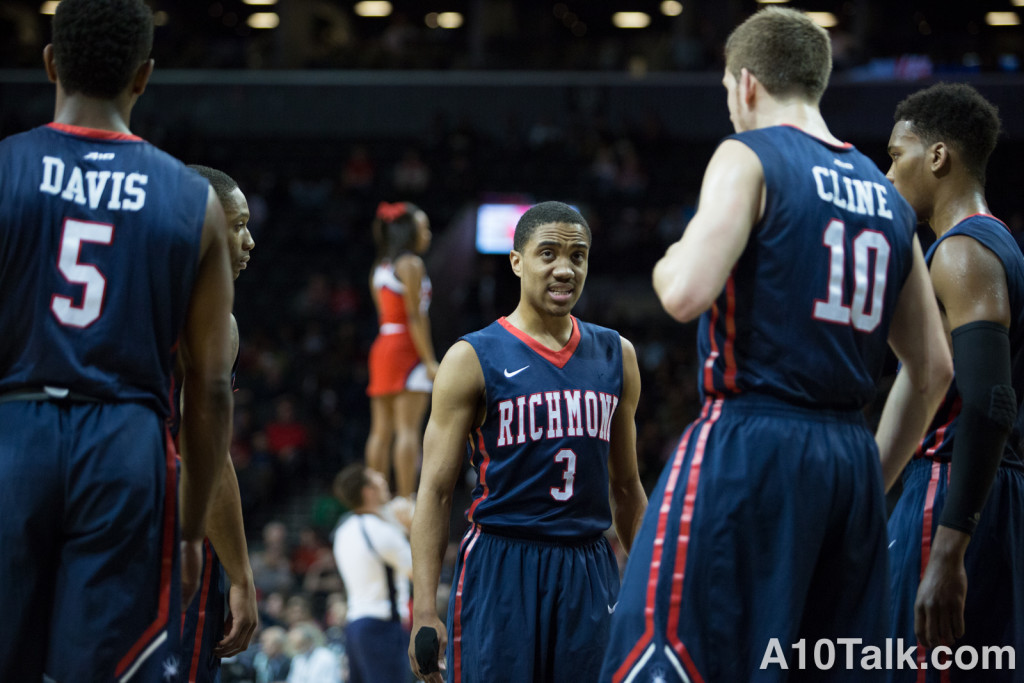Six games into the season the Richmond Spiders are far from a finished product. Yet despite matching last season’s 4-2 start, could there be some early signs of improvement, particularly in one major area of weakness from last season’s .500 squad?
Last year’s Spiders had a mixed OOC resume, taking an 8-4 record into A-10 play with top-100 wins over the likes of Northern Iowa and California and no real bad losses, their four blemishes all coming to kenpom top-100 teams. Richmond had dumped at least 74 points in all of their non-conference wins and 80-plus points in five of their eight wins behind an offense that would go on to rank 41st nationally in offensive efficiency.
But in those wins and certainly in the losses, UofR hinted at a potential longterm issue that proved to eventually be the story of Chris Mooney and Co.’s disappointing season: a Swiss cheese defense that meant the Spiders would need to be nearly perfect offensively all year long.
Needless to say, they weren’t, and despite an offense that was top-10 nationally at finishing inside the arc, a lackluster defense doomed the season, resulting in a 16-16 finish and sub-500 Atlantis 10 record.
So what has changed and is there reason for hope?
In six games Richmond certainly looks improved defensively or at least boasts the stats to suggest they are. The Spiders 49.4% two-point D from last season has improved to 41.1% so far with a three-point D allowing 4% fewer makes. Combine that with a 22% turnover D — call it Havoc in red — and you get a defensive efficiency that has leapfrogged some 60 teams to sit 31 spots outside of the top-100.
But the sample is small and the competition leaves questions.
Thus far Richmond’s opponents boast offenses that average a combined 43.6% shooting inside the arc this season. Old Dominion, Robert Morris and Hampton rank among the worst in the country (sub-300) in finishing inside the arc. Five of the Spiders six wins have come against sub-200 two-point teams with the best finishing team, Maryland, checking in at 165th nationally in two-point percentage at 49% on the season.
Success hasn’t been any more frequent from deep for Richmond’s opponents on the year. The six-team group is averaging 32.1% shooting from deep, with five of the six ranking in the bottom half of college hoops at connecting on the long ball, a group average ranking of 230th nationally (there are 351 DI college hoops teams).
Regardless of the competition the Spiders have done what they’ve needed to do.
Through six games, on paper, Richmond has been a better defensive unit than last year’s group. These next four however could prove just how improved Richmond’s defense is, a stretch of games against four teams that have done a better job of consistently putting the ball through the hoop than the squads Richmond has warmed up with.
So just 10 games into the season, we very well may know if Richmond truly is the improved defensive unit they’ve suggested they may be, or if it’s more of the same from a Chris Mooney team, a team looking to make it back to the NCAA tournament for the first time in six seasons.

